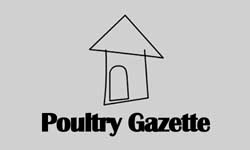
What are amino acids? - amino acids are the building blocks out of which protein is made. In the chicken's body, proteins contain 22 different amino acids, all of which are needed for health. Plants and many bacteria are able to synthesise their own amino acids. Birds and higher mammals cannot make all they need and so these must be provided in the diet.
Amino acids can be described as essential or non-essential. Essential amino acids are those which the chicken cannot make in its own body and must therefore be supplied in their diet. Non-essential amino acids can be made from essential amino acids within the chicken's body. However these too are often supplied in the ration so that the bird does not have to use up energy in synthesising them. Examples of amino acids include lysine and methionine, tyrosine, cystine and arginine.
What do amino acids do in the chicken? - Amino acids make up the body proteins which are used to form muscle, skin, feathers, bone matrix, ligaments and tendons. The requirement of the bird for protein varies at different stages of its life with a higher level required in the rearing period when birds are growing. During lay provision of the right level of amino acids in the diet is one of the main factors influencing laying performance particularly in relation to egg number and size, and is also important to maintain healthy plumage. Proteins are also vital for immune system function. Any protein deficiency will render the bird much more vulnerable to infectious and parasitic disease.
Amino acids in the diet - it is not only important to have all the amino acids the bird requires included in the ration, it is important that they are there at a balanced level and that there is no excess or deficiency of a particular amino acid which might have an adverse effect.
In a non-organic layers ration, there is no problem for the nutritionist in formulating a diet with a balanced amount of protein including essential amino acids. The most commonly used protein source in the diet has been soya. Organic diets have a requirement for non-GM soya which is in more limited supply and much more expensive.
Fish meal is an excellent source of protein, and also helps to increase the palatability of the ration. Its use in layer rations is limited partly by cost and, in organic rations, by restrictions on the source of the fish meal and by the fact that some customers require eggs from hens fed on a vegetable based diet and will not permit its inclusion. Therefore, this source of protein may not be available for all rations. High levels of fish meal are not possible in layer rations as they may cause taint in the eggs.
There are other materials which could provide additional protein in the ration including peas, beans, lupins, linseed meal, sunflower meal and oats. Some of these could only be used in limited amounts as they contain anti nutritional factors. Also in organic rations, solvent extracted feed ingredients are not allowed, restricting the use of oil seed by-product meals unless produced by extrusion.
In non-organic rations, synthetic amino acids can be added to balance the diet as needed. In organic rations, the use of such synthetic amino acids is now not permitted since these are not included in Annex 11, part C, section 2 of the UKROFS Standards for Organic Livestock and Livestock Products. This means that the amino acids/protein requirements in organic rations have to be found from the protein sources mentioned above.
The removal of synthetic amino acids from poultry diets will also have an impact on the environment, as protein levels in rations will be higher leading to a rise in nitrogen excretion which will increase pollution problems. This is obviously a very challenging situation for the feed mills and their nutritionists who have been looking very hard at this issue over the past few months to try and formulate layer rations within these constraints.
Worrying times for the free range producer with birds on organic rations in trying to supply the modern layer which has very specific dietary requirements with a diet which supplies enough of the right sort of protein to support maintenance and production.
The UKROFS standards are due to be reviewed within a year. During this time, we may have learned some hard and interesting lessons in finding out which diets work and which don't for our layers.
